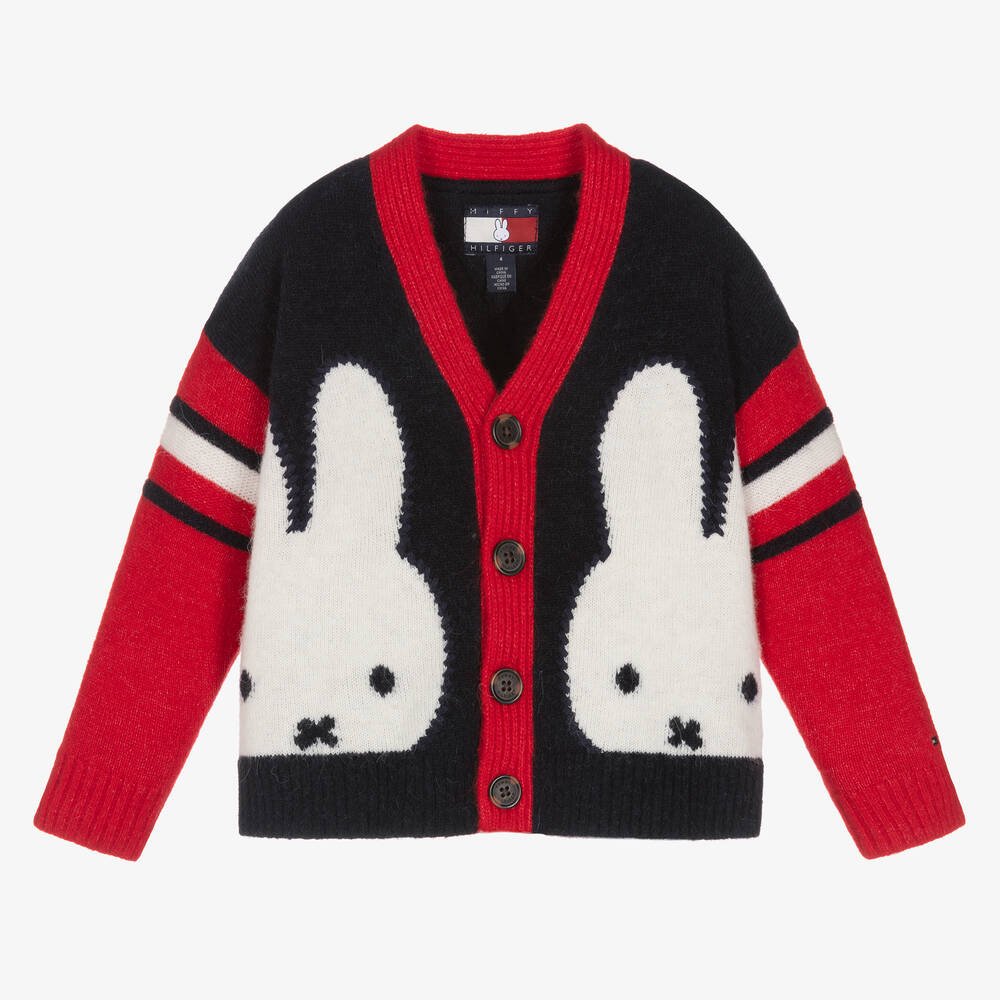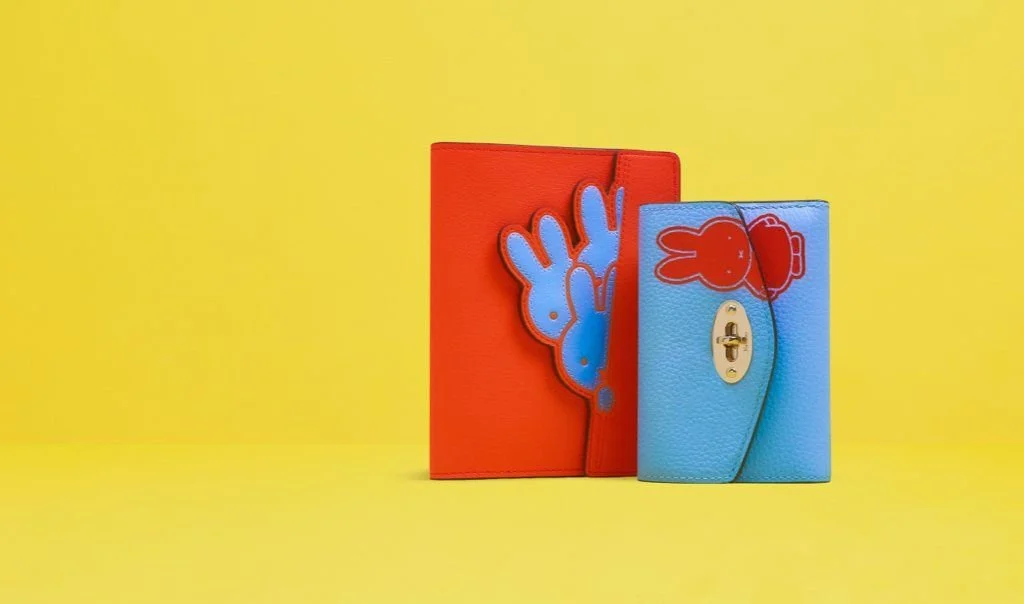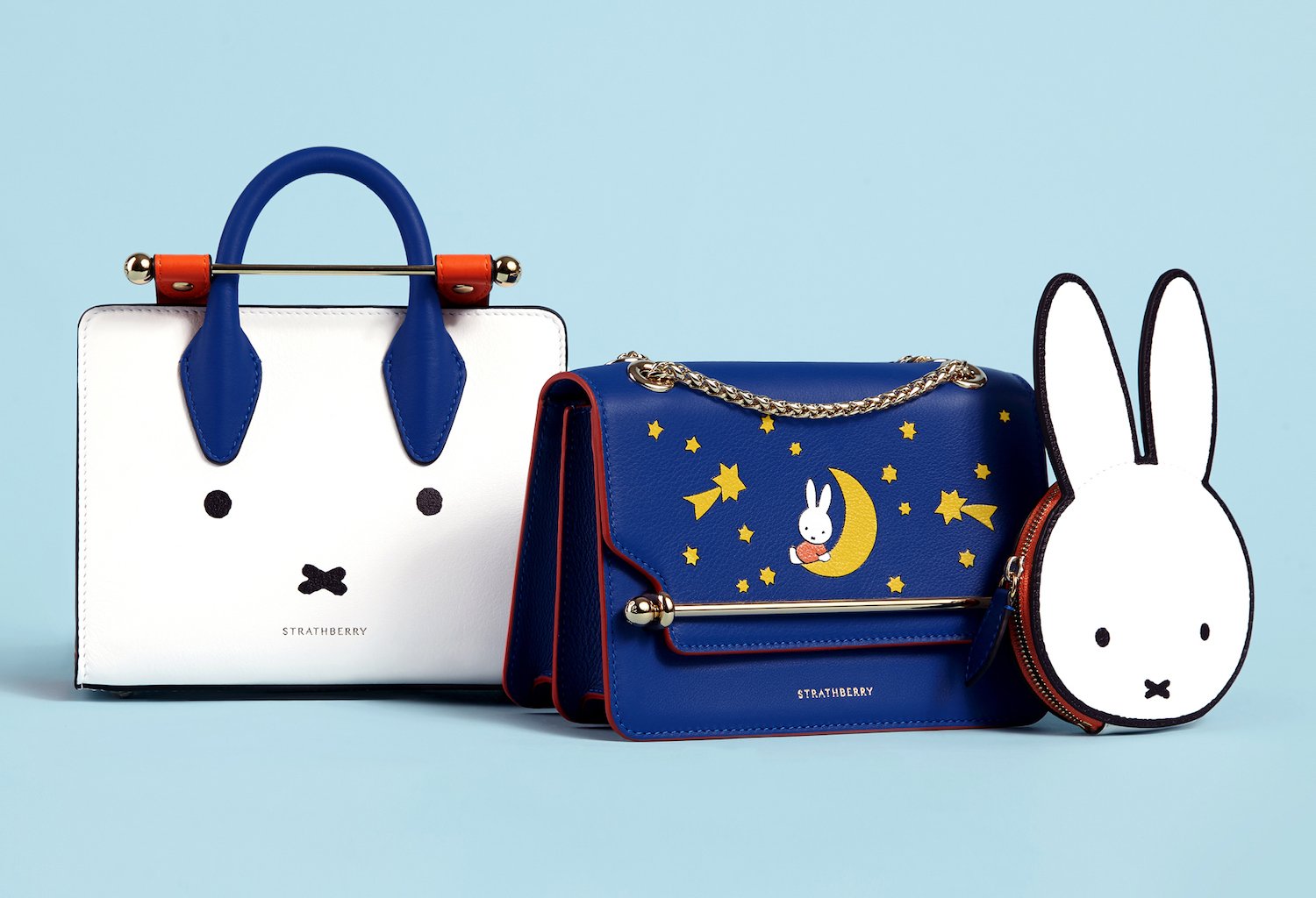What’s the obsession with Miffy?
Words by Sophie Norton
2023 is the year of the rabbit, and you can certainly see why. With big designer brands such as Tommy Hilfiger and Mulberry having just announced partnerships with Miffy, the small cartoon bunny is everywhere.
Miffy holding a balloon, by Dick Bruna
Dick Bruna was also born in a year of the rabbit, almost a century ago, in 1927. He’s self-referred to as the father, or grandfather of Miffy, the little white bunny he first drew in 1955. Miffy is an icon of design, characterised by her simple shape, bold graphic lines, and the use of primary colours in her books. According to the official website, the idea of Miffy was born on a holiday to Egmond aan Zee in the Netherlands. Bruna would make up bedtime stories about the bunny for his eldest son, Sierk, in which the rabbit scampered around the garden of their holiday home. Bruna worked as an illustrator and graphic designer, and soon began to sketch Miffy - in a little dress to signify her as a “little girl bunny”. Complete with scenery and coloured-in, the illustrations appear pretty gender-neutral, probably thanks to the primary colour-palette.
Tommy Hilfiger x Miffy
Although the latest Miffy book was released in 2011, the bunny is still a big hit with children and adults alike, seen notably by the recent announcement of high-fashion brand collaborations. In the past couple of months, I’ve seen the promotion of ‘Tommy Hilfiger x Miffy’ and ‘Mulberry x Miffy’, two separate campaigns that share the usage of Dick Bruna’s cartoon. Tommy Hilfiger also promotes an interactive ‘Miffy World’ on their website, in which customers can ‘find Miffy to unlock exclusive online offers’. The graphics for this are similar in style and theme to Bruana’s own, utilising bright colours contained in thick lines.
Mulberry x Miffy
According to the BBC, this year of the rabbit expects relaxation, quietness and contemplation, in accordance with the gentle and intelligent characteristics believed to be associated with the animal. Perhaps this has influenced these brands’ decisions to use Miffy in their designs, or maybe it’s simply a series of coincidentally similar marketing moves. The rabbit has historically been a symbol of luck, so it would make sense for these companies to consciously embody its motif as a way of encouraging prosperity and success.
Strathberry is another luxury brand that incorporated Miffy into their signature bags, however the brand was ahead of the curve, promoting their capsule collection with the Dutch cartoon icon during the summer of 2020. This was the height of the first worldwide lockdown due to covid-19, and so their use of Miffy the rabbit can be interpreted as a poignant symbol of comfort and hope. The Strathberry website promotes their products with Miffy as embodying “a touch of nostalgia and playful charm”, and whilst available to buy, the full collection is simultaneously on display at the Centraal Museum in Dick Bruna’s own hometown of Utrecht, a nice acknowledgement of Miffy’s origin. Strathberry comments that: “The Dick Bruna ethos of simplicity and curiosity resonates with the Strathberry approach towards design, where powerful storytelling originates from recognisable shapes and colours. This is a fun and light-hearted capsule that has kept us inspired and cheerful during a very strange time”.
Strathberry x Miffy
This concept of uniting an icon from childhood with luxury high-fashion is not new, having seen the Studio Ghibli themed Loewe collection that sports characters from different films, including Howl’s Moving Castle and Spirited Away. Jonathan Anderson, the creative director of Loewe, explains his fondness for the animated artwork featured on the collection, stating: “The world we are living in needs a counteract not as an escape, but as a different outlook. This, to me, is what Hayao Miyazaki’s animated films for Studio Ghibli are about: a commentary on the moment and an alternative to it, always heartfelt, fulfilling, full of fantasy and sentiment.”
Loewe x Studio Ghibli
The simple yet strong design of these comforting characters from many people’s childhoods is what makes them so memorable. Their use within luxury brands seems to follow the same reasoning; to evoke nostalgia but also to acknowledge the future, and the longstanding power of these designs which are not only loved by children, but also adults in all stages of their lives.





